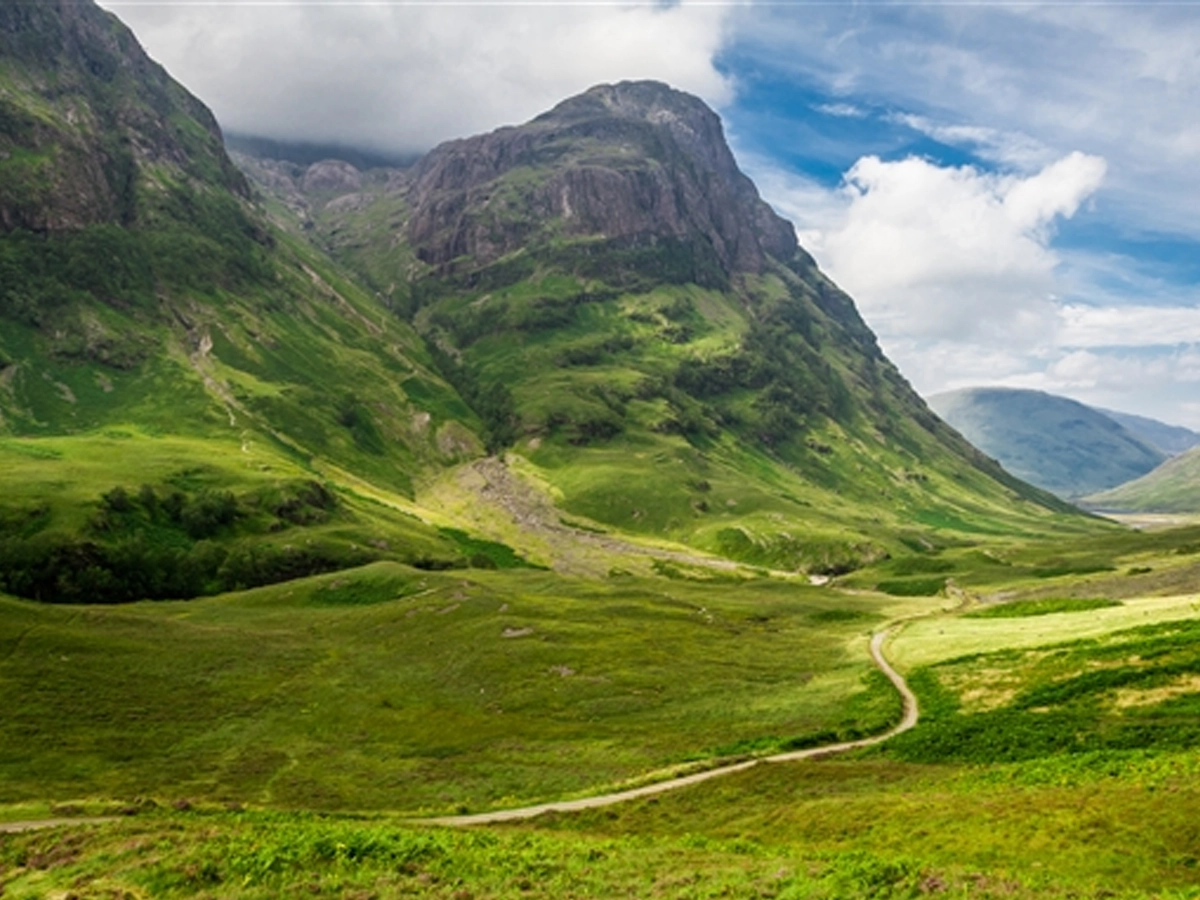Scotland & Ireland Dream Tour


Trip Overview
Explore the best of England, Scotland and Wales on this tour of Great Britain. Revel in the rich history of Bath, Cambridge, York and Edinburgh. Discover Stonehenge, see Shakespeare’s hometown and enjoy intriguing city tours. Admire the enchanting views of the Scottish Highlands and the English Lake District. Tuck into hearty cuisine while travelling – the best Great Britain tours and holiday packages include whisky tasting and a traditional Sunday roast! This Great Britain tour is filled with uniquely British travel experiences. Get ready to enjoy one of our top Britain tours!
- Chauffeur
- 3 Countries
- 13 Days
- 12 Nights
About This Tour
Day 1: Discover Diverse Dublin
Visit Dublin for its rich history and iconic landmarks like the Guinness Storehouse, Trinity College, and Dublin Castle, its vibrant literary culture and music scene, world-class museums and free galleries, a delicious food and drink scene, lively pub atmosphere, and its compact, walkable layout perfect for exploring on foot.
Day 2: Journey to Waterford
Waterford, Ireland, is famous for Waterford Crystal, high-quality glassware that dates back to 1783, and its rich medieval history as Ireland’s oldest city, founded by Vikings and home to historic sites like Reginald’s Tower and the Viking Triangle. The city was also once a major port and wine capital and is known for its beautiful landscapes and outdoor activities like the Waterford Greenway.
Kildare is most famous as Ireland’s Thoroughbred County, home to the premier horse racing courses like the Curragh and the Irish National Stud, where champion horses are bred. The county also boasts a rich history, particularly the ancient monastic site of St. Brigid, and cultural landmarks such as Castletown House and the Museum of Style Icons. Additionally, it’s a popular destination for golfers and shoppers, thanks to numerous golf courses and the designer outlet Kildare Village.
Day 3: Onwards to Blarney and Killarney
Blarney Castle is famous primarily for the legendary Blarney Stone, a rock at the top of the castle that, when kissed, is said to grant the kisser the “Gift of the Gab,” meaning eloquence and the ability to flatter. The castle’s historical significance, built by Cormac MacCarthy in the 15th century, and its beautiful, magical gardens also contribute to its fame as a world-renowned Irish landmark and destination.
Killarney is famous for its breathtaking natural scenery, including Killarney National Park, the Gap of Dunloe, and the Ring of Kerry, which are rich with historical sites such as Ross Castle and Muckross House. The town itself is a popular tourist hub known for its vibrant center, traditional jaunting car rides, lively pub scene, and status as the gateway to Ireland’s natural wonders.
Day 4: A Day on the Ring of Kerry
The Ring of Kerry is famous for its breathtaking natural beauty, including dramatic coastal cliffs, pristine lakes, and lush green hills, offering a legendary driving route around Ireland’s Iveragh Peninsula. It’s also renowned for its rich history with ancient forts and sites like Derrynane House, charming towns and villages, and unique wildlife, all set against a backdrop of the wild Atlantic.
Day 5: Continue to Galway and Ballina
Galway is famous for its vibrant cultural scene, hosting numerous festivals like the Galway International Arts Festival and the Galway Races, its rich tradition of Irish music, its lively atmosphere in pubs and on the streets, its historic “City of Tribes” nickname, and its beautiful location on Ireland’s west coast, near the Wild Atlantic Way and the Aran Islands.
Ballina is famous for two main, distinct reasons: the Irish town is internationally known as the “Salmon Capital of Ireland” for world-class salmon fishing on the River Moy and the annual Ballina Salmon Festival. In contrast, the coastal town of Ballina in New South Wales, Australia, is famous for its beaches, surfing, and the iconic “Big Prawn” landmark, offering a relaxed seaside experience.
Day 6: Off to Donegal and on to Londonderry
Donegal is famous for its dramatic scenery, including the Slieve League sea cliffs and wild beaches, its rich history as the home of the O’Donnell dynasty, its thriving traditional music scene featuring artists like Enya and Clannad, and its production of distinctive handwoven tweed and local food. The county offers a rugged, untouched landscape ideal for hiking, cycling, and experiencing the authentic Irish language and culture.
Londonderry is famous as the only completely intact Walled City in Ireland and for its rich history, particularly related to the Plantation of Ulster, the historic Sieges, and the Troubles. It’s also a vibrant destination for its Halloween festivities, often considered the best in the world, its culture and arts scene, including a distinctive street art and music scene, and its location where the Wild Atlantic Way and Causeway Coastal Route meet.
Day 7: The Giant’s Causeway and on to Belfast
The Giant’s Causeway is famous for its thousands of unique, interlocking, hexagonal basalt columns, a stunning geological formation created by volcanic activity over 50 million years ago, which has also inspired the legend of the Irish giant Finn McCool. Designated as Northern Ireland’s first UNESCO World Heritage Site, its geological significance, striking appearance, and rich folklore make it a globally recognized natural wonder.
Belfast is the capital city and port of Northern Ireland, located on the River Lagan. It is known for its shipbuilding past, particularly as the birthplace of the RMS Titanic, and features the Titanic Quarter and the Titanic Belfast museum. The city also boasts a vibrant cultural scene, seen in its Cathedral Quarter with art galleries and live music, and is a UNESCO City of Music. Key landmarks include Belfast City Hall, the Ulster Museum, and St George’s Market.
Day 8: Cross the Irish Sea to Glasgow
Cairnryan is famous for being a busy modern ferry port connecting Scotland to Northern Ireland, but its history also includes being a key military port during World War II, a site for building the famous Mulberry Harbours used on D-Day, and a major location for ship-breaking after the war.
Glasgow is famous as Scotland’s largest city, a UNESCO City of Music with a legendary music scene, a hub for arts and culture with world-class museums like the Kelvingrove Art Gallery and Museum, and a city known for its striking Victorian architecture and its “World City of Friendship” status. It’s also famous for its historic shipbuilding industry, vibrant street art, and as a major sporting center.
Day 9: Loch lomond - Glencoe - Fort William
Glencoe is one of the most magnificent areas of natural wilderness in the whole of
Britain and home of the worst atrocities. Glencoe is perhaps Scotland’s
most famous and most scenic glen and is also arguably Scotland’s most historic glen,
and it was recently voted as Scotland’s most romantic glen.
Loch Lomond is a freshwater Scottish loch which crosses the Highland Boundary Fault, often considered the boundary between the lowlands of Central Scotland and the Highlands. Luss Village is often regarded as the prettiest village in Scotland with its prim, identical sandstone and slate cottages garlanded in rambling roses.
Fort William is famous primarily for two things: it’s a major center for outdoor adventure and hillwalking in the Scottish Highlands, known as the “Outdoor Capital of the UK” because it’s located at the foot of Ben Nevis, Britain’s highest mountain. Additionally, there is a prominent military fortress in Kolkata, India, also named Fort William, famous for its historical significance as a major British military stronghold and now serving as the headquarters for the Indian Army’s Eastern Command.
Day 10: Continue Over the Sea to Skye
The Isle of Skye is famous for its breathtaking natural beauty, including dramatic mountains like the Cuillin Hills, unique rock formations such as the Old Man of Storr and Quiraing, and the crystal-clear Fairy Pools. It’s also known for its rich history, including ancient castles and clan legends, diverse wildlife, and its appearance in films like Prometheus and Stardust, all contributing to its reputation as a magical and captivating destination.
Day 11: Loch Ness and Culloden in the Scottish Highlands
Eilean Donan Castle is famous for its picturesque island location in the Scottish Highlands, its iconic status as a symbol of Scotland, its appearances in major films like Highlander and the James Bond movie The World Is Not Enough, and its historic and romantic architecture after being restored to its former glory in the 20th century.
Loch Ness is famous primarily for the legendary Loch Ness Monster, or “Nessie,” a cryptid believed by some to inhabit the deep, dark waters of the Scottish loch, drawing tourists for centuries with claimed sightings and investigations into the creature’s existence. The mysterious creature has captured global fascination, making the beautiful Scottish Highlands loch a top tourist destination known for its scenic landscapes and the enduring allure of the unsolved mystery.
The Battle of Culloden is famous as the last pitched battle fought on British soil (1746) and the decisive end of the Jacobite Rising, which aimed to restore the Stuart dynasty to the throne. The brutal aftermath saw the end of traditional Highland clan culture, including the suppression of the Gaelic language and tartan, making it a pivotal and haunting moment in Scottish history.
Day 12: Journey to Enchanting Edinburgh
Pitlochry is famous for its beautiful natural surroundings, Victorian architecture, and being a major tourist destination in Highland Perthshire. Key attractions include the Pitlochry Dam and Fish Ladder, a functional hydroelectric dam with a special ladder for salmon migration; the renowned Pitlochry Festival Theatre; and Scotland’s Whisky Trail with its distilleries, such as Blair Athol Distillery.
St. Andrews, Scotland, is world-famous for being the “Home of Golf” and its historic golf links, including the iconic Old Course, as well as for being the site of the prestigious University of St. Andrews. The town also has significant historical importance as a former holy pilgrimage site, with ruins of its medieval cathedral, and offers visitors a charming historical atmosphere with medieval streets and traditional buildings.
Day 13: Uncover Edinburgh’s Treasures
The Palace of Holyrood house, commonly referred to as Holyrood Palace or Holyrood house, is the official residence of the British monarch in Scotland
Calton Hill is one of Edinburgh’s main hills, set right in the city centre. It is unmistakable with its Athenian acropolis poking above the skyline. resident to some iconic Scottish monuments and buildings. Top of the hill address
Edinburgh Castle is a historic fortress which dominates the skyline of the city of Edinburgh. The buildings inside the fortress including St Margaret’s Chapel, The Great Hall, Scottish War Memorial, stone of destiny and the National War Museum, the Scottish Crown Jewels.
Princess Garden (Edinburgh Castle Viewing Point) – Princes Street Gardens are two adjacent public parks in the centre of Edinburgh, Scotland, lying in the shadow of Edinburgh Castle.
Scott monument – The Scott Monument is the world’s second largest monument to a writer. It dominates the Edinburgh panorama. After Scott’s death in 1832, funds were raised by the architect William Burn and his patron the Duke.
Fettes College – Fettes College is a co-educational private boarding and day school in Craigleith. It inspired J.K. Rowling for the description of Hogwarts School of Witchcraft and Wizardry.
Dean Village – At the heart of the village is Well Court, the most iconic building in the village. This building was built in the 1880s and housed local workers who worked at the water mills.
National Galleries of Scotland: Modern One – The Scottish National Gallery has a notable collection of works by Scottish artists, including several landscapes by Alexander Nasmyth, and several works by Sir Henry Raeburn.
Forth Bridge – The Forth Bridge is a celebrated Scottish landmark, and a milestone in the development of railway civil engineering. It was the first major structure in Britain to be made of steel.
Royal Mile is at the heart of Edinburgh’s Old Town. The Royal Mile is the busiest tourist street in the Old Town, rivalled only by Princes Street in the New Town.
Whisky Experience (Optional tour)
The Hub – is a public arts and events building in the centre of Edinburgh, Scotland. Located at the top of the Royal Mile
St. Giles Cathedral also known as the High Kirk of Edinburgh, has been one of Edinburgh’s religious focal points for approximately 900 years. Avengers infinity film
The bake potato shop & Leila Shop (Avengers Infinity film location)
National Museum of Scotland – collections relating to Scottish antiquities, culture and history, and the adjacent Royal Scottish Museum, with collections covering science and technology, natural history, and world cultures
Bobby Greyfriars – was a Skye Terrier who became known in 19th-century Edinburgh for spending 14 years guarding the grave of his owner until he died himself on 14 January 1872
Elephant House – Author J.K. Rowling ,had her first book published while she was writing in the back room overlooking Edinburgh Castle, making The Elephant House the “birthplace” of the series of Harry Potter novels.
Victoria Street – Victoria Street is a steep street of cobbles, which winds up from the Grassmarket to George IV Bridge, near the Royal Mile. With its unusual shape and collection of quirky shops, its often said to be the idea behind Diagon Alley in the Harry Potter series.
Tour Highlights
- Explore the stunning Isle of Skye.
- Explore the UNESCO old town of Edinburgh.
- Enjoy the scenic view of Glencoe.
- Step back in time through medieval castles.
What’s Included?
- 8 Seaters luxury private Minivan
- Professional Chauffeur/Guide
- Complimentary bottle of water
- Free Wi-Fi onboard
- Admission Tickets (if option selected)
- City Congestion and Parking
- Hotel pick-up and drop-off
- 10 hour full-day private tour
- Chauffeur accompanies the clients on tour.
- Driver can't enter sites
- Tips / Gratuities

